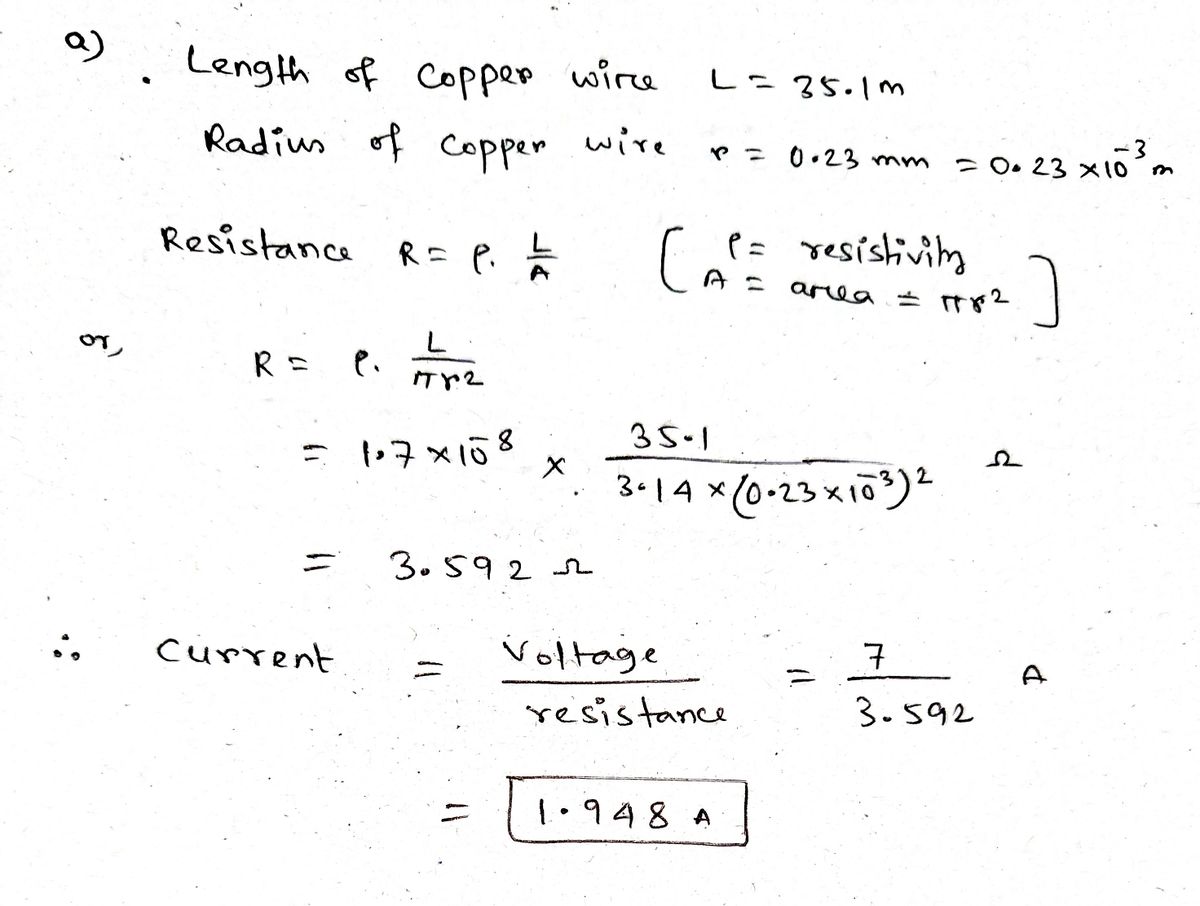A 35.1-m length of copper wire at 20.0°C has a radius of 0.23 mm. If a potential difference of 7.0 V is applied across the length of the wire, determine the current in the wire
(a) A 35.1-m length of copper wire at 20.0°C has a radius of 0.23 mm. If a potential difference of 7.0 V is applied across the length of the wire, determine the current in the wire. (Use the values in the following table.)
Resistivities and Temperature Coefficients of Resistivity for Various Materials (at 20°C)
| Material | Resistivity (Ω · m) |
Temperature Coefficient of Resistivity [(°C)−1] |
|---|---|---|
| Silver | 1.59 ✕ 10−8 | 3.8 ✕ 10−3 |
| Copper | 1.7 ✕ 10−8 | 3.9 ✕ 10−3 |
| Gold | 2.44 ✕ 10−8 | 3.4 ✕ 10−3 |
| Aluminum | 2.82 ✕ 10−8 | 3.9 ✕ 10−3 |
| Tungsten | 5.6 ✕ 10−8 | 4.5 ✕ 10−3 |
| Iron | 10.0 ✕ 10−8 | 5.0 ✕ 10−3 |
| Platinum | 11 ✕ 10−8 | 3.92 ✕ 10−3 |
| Lead | 22 ✕ 10−8 | 3.9 ✕ 10−3 |
| Nichromea | 150 ✕ 10−8 | 0.4 ✕ 10−3 |
| Carbon | 3.5 ✕ 10−5 | −0.5 ✕ 10−3 |
| Germanium | 0.46 | −48 ✕ 10−3 |
| Silicon | 640 | −75 ✕ 10−3 |
| Glass | 1010–1014 | |
| Hard rubber | ≈1013 | |
| Sulfur | 1015 | |
| Quartz (fused) | 75 ✕ 1016 |
Calculate the resistance of the wire and use the value you calculate to find the current
??? A
(b) If the wire is heated to 36.0°C while the 7.0-V potential difference is maintained, what is the resulting current in the wire?
Use the value of the resistance at 20.0°C and the temperature coefficient of resistivity to find the resistance at the requested temperature and then use that resistance to find the current.
???A

Step by step
Solved in 2 steps with 2 images









